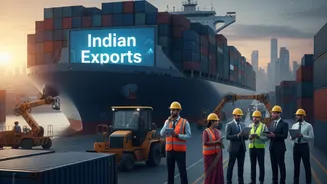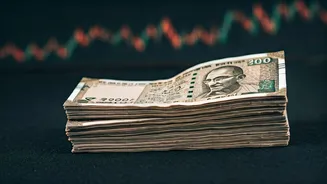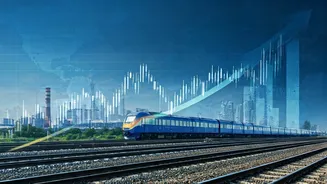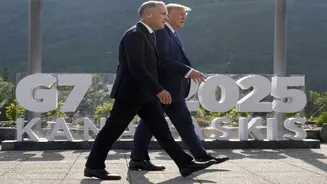As global growth slows and trade patterns shift, India faces the challenge of keeping its exports globally competitive. Experts say the path forward lies
in combining low production costs, technology-driven manufacturing, and ease of doing business reforms to ensure resilience in a changing economic landscape. According to a ANI report, Ajay Srivastava, founder of the Global Trade Research Initiative (GTRI), explained, India’s export policy now needs a long-term focus on cost efficiency, innovation, and domestic value addition. “The focus should be on lowering production costs, simplifying regulations, and accelerating ease of doing business—especially in logistics, compliance, and taxation,” Srivastava told ANI. Key Drivers for Export Competitiveness Srivastava emphasized a dual approach that blends foreign technology partnerships with local innovation.
- Reverse Engineering & Localisation: “What India consumes, it must also be able to make and export,” Srivastava said, citing sectors like electronics, machinery, and digital technology.
- Tech-Driven Manufacturing: India must invest in R&D and digital infrastructure to close the gap with leading exporters.
- Simplified Compliance: Streamlining taxes, logistics, and trade paperwork can reduce production costs significantly.
Trade Agreements and Global Alignment
Negotiations with the United States are progressing steadily, though no formal announcements have been made. On the European front, Srivastava confirmed that the India–UK Free Trade Agreement has been signed and is awaiting ratification by the British Parliament.
“The India–EU deal is also in an advanced stage, with most chapters nearing closure,” he added, noting that both pacts could unlock new export markets, boost investor confidence, and better integrate India with global supply chains.
Macroeconomic Challenges
Srivastava cautioned that global monetary trends could impact export performance.
“When the US Federal Reserve raises rates, funds flow back to the US, pressuring the rupee, widening the current account deficit, and tightening liquidity,” he explained.
To manage this, India must ensure strong domestic growth drivers and prudent macroeconomic management.
Trade Blocs & India’s Position
On India’s absence from blocs like RCEP and CPTPP, Srivastava argued that it is not necessarily a setback.
“Nearly 80% of global trade still happens at non-preferential tariff rates. Instead of rushing to join every bloc, India should focus on export competitiveness, logistics efficiency, and regulatory reform,” he told ANI.
He further said India should use this “no-rules phase” in global trade to rebuild competitiveness across industry, agriculture, and services, leveraging investments in green energy, digital tech, and large-scale manufacturing.
Bridging the Trade Gap with China
Addressing India’s persistent trade deficit with China, Srivastava suggested targeted industrial strategies.
“India needs large-scale reverse engineering, technology adaptation, and localised supply chains in electronics, machinery, and chemicals,” he said.
Over time, this could narrow the trade gap and help India emerge as a credible global supplier.
Way Forward: Government–Industry Coordination
Srivastava concluded that both policy support and private-sector innovation will be essential for India’s export future.
“The government must ensure a stable trade policy, faster clearances, and targeted incentives,” he said.
“The private sector must invest in R&D, design, branding, and partnerships to build globally competitive products.”
“In a slower, more fragmented global economy,” he added, “the winners will be those who build resilience at home while shaping trade on their own terms.”
















